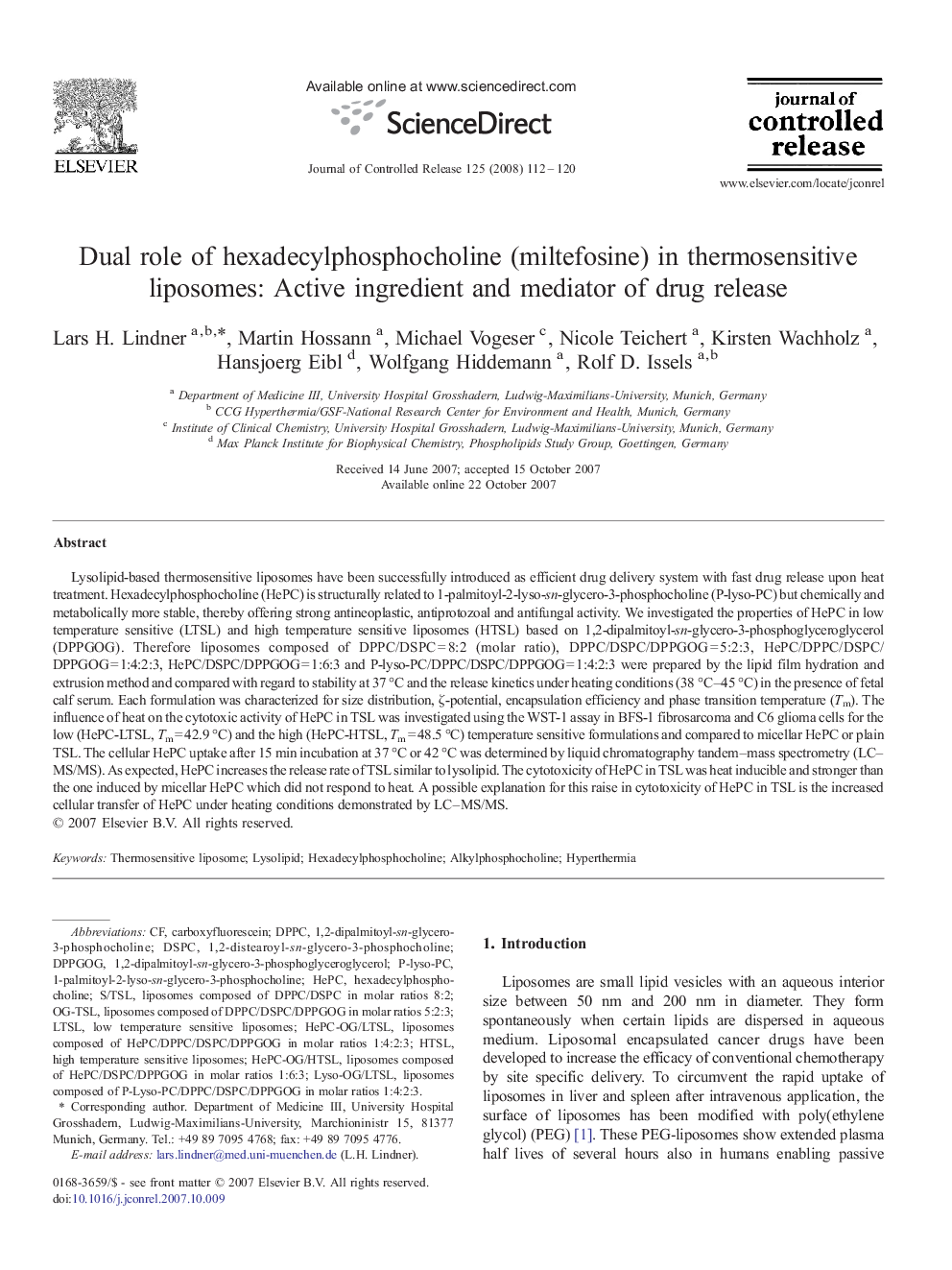| کد مقاله | کد نشریه | سال انتشار | مقاله انگلیسی | نسخه تمام متن |
|---|---|---|---|---|
| 1426808 | 986830 | 2008 | 9 صفحه PDF | دانلود رایگان |

Lysolipid-based thermosensitive liposomes have been successfully introduced as efficient drug delivery system with fast drug release upon heat treatment. Hexadecylphosphocholine (HePC) is structurally related to 1-palmitoyl-2-lyso-sn-glycero-3-phosphocholine (P-lyso-PC) but chemically and metabolically more stable, thereby offering strong antineoplastic, antiprotozoal and antifungal activity. We investigated the properties of HePC in low temperature sensitive (LTSL) and high temperature sensitive liposomes (HTSL) based on 1,2-dipalmitoyl-sn-glycero-3-phosphoglyceroglycerol (DPPGOG). Therefore liposomes composed of DPPC/DSPC = 8:2 (molar ratio), DPPC/DSPC/DPPGOG = 5:2:3, HePC/DPPC/DSPC/DPPGOG = 1:4:2:3, HePC/DSPC/DPPGOG = 1:6:3 and P-lyso-PC/DPPC/DSPC/DPPGOG = 1:4:2:3 were prepared by the lipid film hydration and extrusion method and compared with regard to stability at 37 °C and the release kinetics under heating conditions (38 °C–45 °C) in the presence of fetal calf serum. Each formulation was characterized for size distribution, ζ-potential, encapsulation efficiency and phase transition temperature (Tm). The influence of heat on the cytotoxic activity of HePC in TSL was investigated using the WST-1 assay in BFS-1 fibrosarcoma and C6 glioma cells for the low (HePC-LTSL, Tm = 42.9 °C) and the high (HePC-HTSL, Tm = 48.5 °C) temperature sensitive formulations and compared to micellar HePC or plain TSL. The cellular HePC uptake after 15 min incubation at 37 °C or 42 °C was determined by liquid chromatography tandem–mass spectrometry (LC–MS/MS). As expected, HePC increases the release rate of TSL similar to lysolipid. The cytotoxicity of HePC in TSL was heat inducible and stronger than the one induced by micellar HePC which did not respond to heat. A possible explanation for this raise in cytotoxicity of HePC in TSL is the increased cellular transfer of HePC under heating conditions demonstrated by LC–MS/MS.
Journal: Journal of Controlled Release - Volume 125, Issue 2, 22 January 2008, Pages 112–120